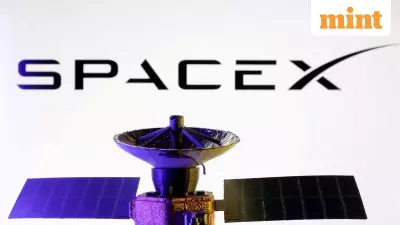
In an extraordinary astronomical breakthrough, scientists have identified what may be the oldest comet ever observed—a celestial wanderer that has been traveling through space for approximately 7 billion years, carrying secrets from a time before our solar system even existed.
A Cosmic Time Capsule From Deep Space
The comet, known as Atlas, represents one of the most significant astronomical discoveries in recent memory. Unlike typical comets that originate from within our solar system, Atlas appears to be a true interstellar visitor that formed in a completely different star system before being captured by our Sun's gravity.
What makes this discovery particularly groundbreaking is the comet's incredible age. At approximately 7 billion years old, Atlas predates not only human civilization and Earth itself, but even our entire solar system, which formed only 4.6 billion years ago.
Unlocking Pre-Solar System Secrets
Researchers are particularly excited about the scientific potential of this ancient cosmic traveler. Comet Atlas contains pristine material that has remained largely unchanged since its formation, offering scientists a rare opportunity to study:
- Primordial composition of early star systems
- Formation processes that predate our Sun
- Chemical signatures from different cosmic environments
- Evolutionary history of interstellar objects
Why Atlas Is Different From Typical Comets
Most comets we observe are relatively young by cosmic standards, having formed alongside our solar system from the protoplanetary disk that surrounded our young Sun. These comets typically originate from either the Kuiper Belt beyond Neptune or the distant Oort Cloud.
Atlas, however, displays characteristics suggesting it formed around a different star entirely. Its chemical composition, orbital dynamics, and physical properties all point to an extrasolar origin, making it a genuine messenger from beyond our cosmic neighborhood.
The Scientific Gold Rush
Astronomers worldwide are mobilizing to study Atlas during its current pass through the inner solar system. The comet's relative proximity to Earth provides a unique window of opportunity to analyze its properties using:
- Spectroscopic analysis to determine chemical composition
- Radio telescope observations to study molecular structure
- Orbital calculations to trace its cosmic journey
- Comparative studies with solar system comets
This research could fundamentally reshape our understanding of how star systems form and evolve across the galaxy. The data gathered from Atlas might reveal whether the processes that formed our solar system are universal or unique.
Implications For Understanding Cosmic Evolution
The discovery of such an ancient comet challenges several existing models of cosmic evolution and interstellar object distribution. If comets like Atlas are more common than previously thought, it suggests that:
- Material exchange between star systems occurs more frequently
- Building blocks of life might be widespread throughout the galaxy
- Planet formation processes share common characteristics across different systems
- Ancient cosmic material survives longer than theoretical models predicted
As Atlas continues its journey through our solar system, astronomers are racing against time to extract every possible piece of information from this ancient cosmic messenger. Each observation brings us closer to understanding not just where we came from, but how our cosmic neighborhood fits into the broader tapestry of the galaxy.





